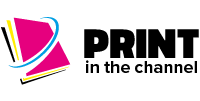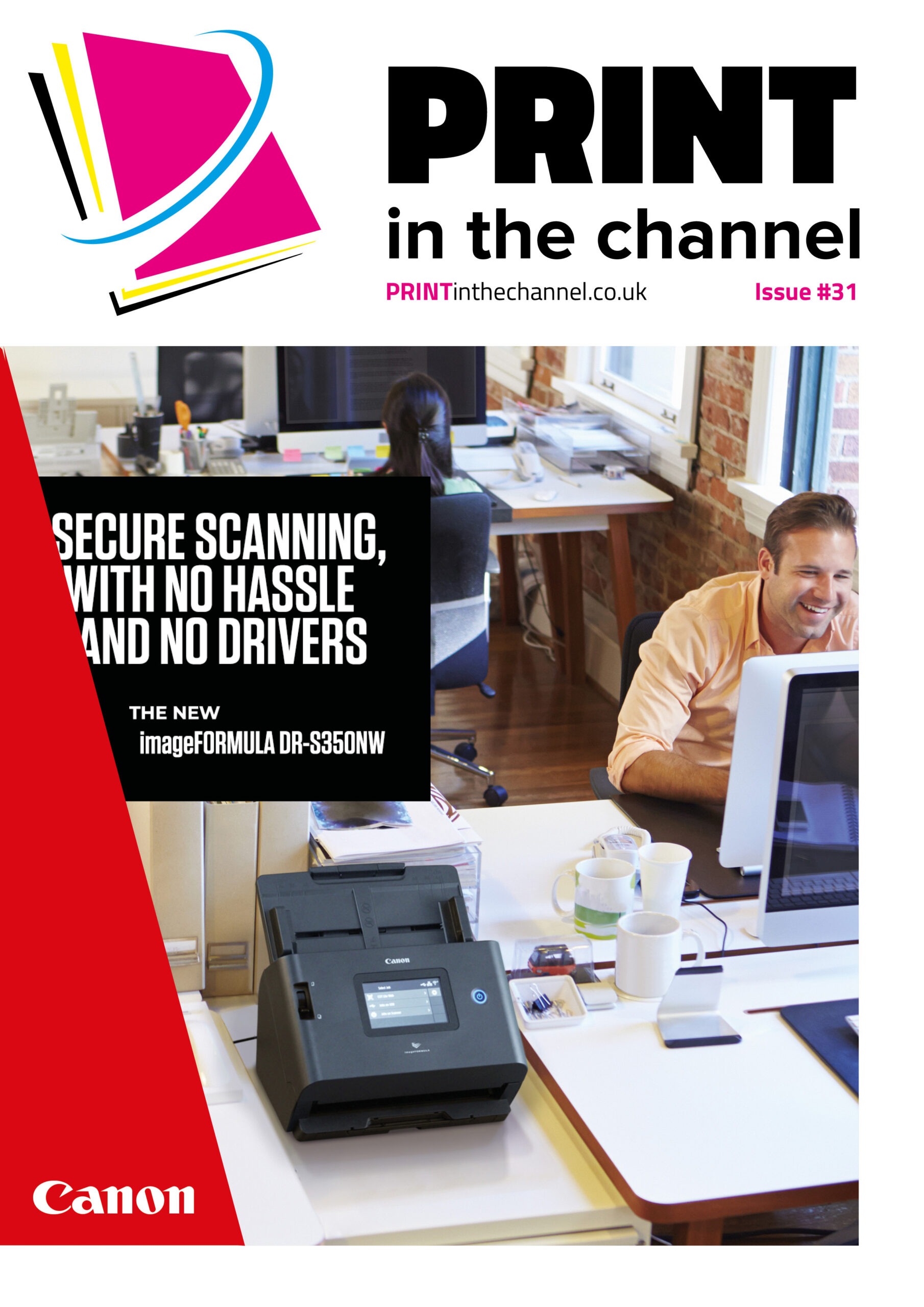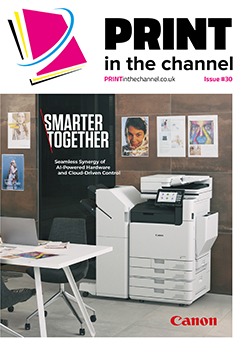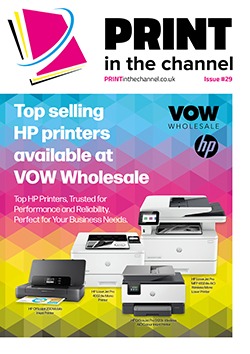With ever increasing demands made of 3PL businesses to deliver goods faster, it means that more is being asked of labels – including increasingly RFID-enabled labels – and the printers used to create them, creating opportunities for resellers.
With ever-more goods being shipped, the third-party logistics (3PL) market in the UK is growing strongly. From 2025 to 2030, the UK market is expected to grow from $29.1 billion to $35.35 billion, according to a forecast by Mordor Intelligence.
But while the sector is growing, so are the demands on it, with distributors and customers expecting ever-faster delivery, allied to great accuracy and proof of provenance.
This means that the labels used on goods are becoming more important. Deyon Antione, product marketing manager at Toshiba Tec, says that while labelling has always been essential in 3PL operations, “Since the pandemic e-commerce and omnichannel fulfilment growth has meant 3PL providers must manage even larger inventories across multiple locations while meeting demanding customer expectations for speed and accuracy.”
For instance, labels enable accurate inventory tracking for management, storage and location of goods for efficient order fulfilment, helps to streamline the returns process, via multiple carriers and drop off point and to reduce shipping errors by providing clear and legible information, Deyon adds.
Jeremie Brocas, sales manager France, Bixolon Europe GmbH, adds that many 3PLs are short staffed. “This has meant that various kinds of automation technologies are increasingly providing value to this sector – and barcode scanners and label printers form a critical part of the entire technology value chain, keeping warehouses in order,” he says.
“Therefore, embracing labelling technologies is essential as part of ensuring 3PLs improve the traceability of goods flowing through fulfilment centres. This is because label printers typically print labels with key information on them – including 1D or 2D codes – according to requirements set out by various manufacturers, retailers and shipping companies. They get stuck onto pallets, boxes and stock as they are unpacked, delivered and pass through the supply chain. 1D and 2D codes carry the vital key information that aligns with many OMS, WMS and TMS systems. They provide a single source of truth that scanners can work from, allowing the supply chain to communicate and organise itself. They must be scannable, readable and high-quality.”
RFID popularity
To cope with this demand, RFID-enabled labels are also becoming more popular. Indeed, as Benoit Charnallet, product manager for TSC Auto ID EMEA, says, RFID adoption in 3PL is now entering a scaling point phase. “This requires RFID equipment to print and encode the RFID label, as well as read it and manage the data,” he says. “We see more and more RFID installation going forward. If the retail industry adopts RFID and deploys it on a large scale, transport and logistics could be the following sector to adopt it more widely.”
Deyon adds that in the past RFID labels were only used on high value items due to the cost of them. “But the accelerating adoption and volume across logistics and the supply chains has driven the cost down, allowing for real-time tracking and tracing of goods from manufacturer to the customer,” he adds. “Retail mandates are pushing RFID into mainstream logistics for things like cold chain monitoring and asset tracking.”
RFID has various benefits including real-time tracking, giving full visibility of pallets, cartons or even item level, Deyon adds. “Automating inventory counts with RFID labelled items also improves accuracy, saves time and eliminates human error,” he says. “It allows for easy integration with IoT systems for automated warehousing amongst other things, and feeds into analytics for business-critical reporting.”
Jeremie agrees that as price of implementation is falling, it means SMBs can take advantage of RFID technology. “Essentially, RFID labels can be coded with vital SKU data and can be printed on with standard 1D or 2D codes where required,” he adds. “This approach provides a failsafe for if or when an RFID system is down.”
Popular solutions
With various types of labels being used, it means there are a variety of label printing solutions proving popular currently. “Stationary desktop label printers, for example, are often located at areas where pallets are received from clients before they are unpacked, labelled and redistributed through the fulfilment centre,” says Jeremie.
“They can be located at packing stations too – where goods are packaged and labelled according to an array of shipping companies’ preferred label configurations. Mobile printers are also widely used to support the relabelling of racks or awkwardly shaped goods that are too bulky to fit at packing stations.
“Linerless labelling printers are increasingly popular too. Typically, with traditional labels, the removal and disposal of plastic backings takes up time and space, therefore, using labels that can be printed and stuck directly onto items without the need to remove the sticky plastic backing is an increasingly popular option. “Mobile versions of these printers can prove useful too – for example when changing labels on racking or large items.”
Benoit notes that different user case/applications requires different printers and that in distribution centres and warehouses, solutions will be used in parallel. “For instance, for high printing volume (pallet, parcel relabelling etc), industrial printers will fit best. TSC Auto ID’s MH241 is largely installed for such applications.
“For mobile printing (on a forklift or pedestrian), devices such as the TSC Alpha 40L, a robust 4” mobile printer, will work best.
“Meanwhile, for smaller volumes, or for printing solutions on battery carts, a desktop printer such as TSC’s DH240 or TH240 will be perfect.”
Deyon adds that thermal transfer and direct thermal label printers offer durability, speed and resolutions of 200, 300 and 600dpi, dependant upon application. “Scalable RFID enabled printers for encoding and printing onto RFID labels like Toshiba’s BX410T-TS Industrial label printer are ideal with its built in RFID analyser app, which works with its UHF RFID module with adjustable antenna for accurate encoding,” he adds.
Reseller conversations
When talking to customers about label printing solutions, there are several facets that resellers should highlight. Deyon says that scalability is important. “Barcode printing solutions are truly scalable with a range of options and will grow with the customer’s business,” he says. “They can be upgraded to suit many applications and can be placed wherever needed in a warehouse with a range of connectivity options to suit.”
Sustainability should also be highlighted. “Eco-friendly features like ribbon-saving technology and non-toxic thermal ribbons should be highlighted,” he says. “Plus, we offer innovations like linerless printing to reduce waste.”
Return on investment is also key. “Toshiba’s barcode printing solutions are built to help customers save money in the long run,” says Deyon. “Offering durability, reliability, long-lasting consumables and low maintenance requirements means fewer service calls and a better return on investment.”
Benoit says resellers should highlight ease of use and integration in customer application. “Also, productivity such as speed, throughput and volume of printout per day should be mentioned, as well as quality, with resolution up to 600dpi for small characters printing requirement.”
Jeremie says that the versatility and reliability of the devices is important. “This includes ensuring there is less downtime when using devices; fewer spare units are needed; and demonstrating that standard printing coupled with RFID is possible,” he adds. “Maintenance needs to be easy for first level changes, such as print heads, Platten rollers and so on. Devices also need to be easily compatible with WMS and ERP systems to make data collection accurate, easy and streamlined.
“Finally, printing accuracy when using mobile printers is vital; especially when used during cross-docking, because organisations cannot afford to have a label mismatch occur during this key process.”
Future
This is a changing market, with intelligent labelling continuing to develop. “Intelligent labels embedded with sensors, and NFC, offering IoT capabilities will become more common,” Deyon says. “RFID tags will be used in everything from pallets to pharmaceuticals, with over 55 billion passive RFID tags expected to be sold globally.”
This will be alongside AI-driven logistics automation, which will offer autonomous decision-making for routing, inventory and labelling, he adds.
There will also be more demand for sustainable labelling, driven by legislation and customer demands. “Biodegradable materials and wider adoption of linerless printing for sustainable and efficient printing will become the norm,” Deyon says.
Hyperlocal fulfilment and logistics-as-a service will also influence demand. “Local urban micro-warehouses and dark stores will demand flexible portable labelling solutions to enable companies to fulfil and deliver orders in under two hours,” Deyon says. “More companies will be outsourcing their logistics functions to third-party platforms that offer modular services that easily integrate with e-commerce and ERP systems – this is where printers that natively print PDF’s will excel.”
Jeremie agrees that the use of label printers will continue to grow. “Additionally, the sector will likely start to review every aspect of their logistics processes to identify areas that can be streamlined,” he adds.
“Within 3PLs, we have seen that the rise in ecommerce has accelerated the demand for cross docking, a process that allows companies to transfer goods from inbound to outbound docks with little or no storage in between. Effective cross docking enables faster turnaround times and facilitates quick order fulfilment. It also reduces the costs associated with warehouse storage and handling and can streamline last mile delivery and minimise expensive empty miles. Labelling plays a vital role within this process, and we expect 3PLs to review how to improve these parts of their operations along with many others.”










